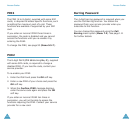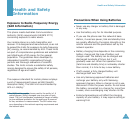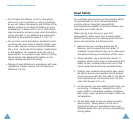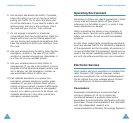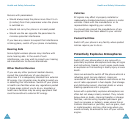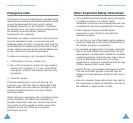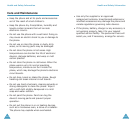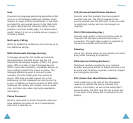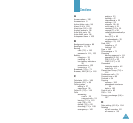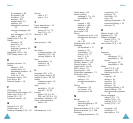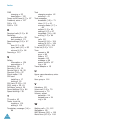
146
Glossary
To help you understand the main technical terms
and abbreviations used in this booklet and take full
advantage of the features on your mobile phone,
here are a few definitions.
Active Folder
Ability to answer a call simply by opening the
phone.
Call Barring
Ability to restrict outgoing and incoming calls.
Call Diverting
Ability to reroute calls to another number.
Call Holding
Ability to put one call on standby while answering or
making another call; you can then switch between
the two calls, as required.
Call Waiting
Ability to inform users that they have an incoming
call when engaged on another call.
Caller Line Identification Services (Caller ID)
Services allowing subscribers to view or block the
telephone numbers of callers.
Glossary
147
Enhanced Message Service (EMS)
An adaptation of the Short Message Service (SMS)
that allows users to send and receive ring tones and
operator logos, as well as combinations of simple
media to and from EMS-compliant handsets.
Because EMS is based on SMS, it can use SMS
centres the same way that SMS does. EMS works
on all Global System for Mobile communications
(GSM) networks. EMS senders can use text,
melodies, pictures, sounds, and animations to
enhance the expressive power of messages that are
limited by the display constraints of mobile devices.
GPRS (General Packet Radio Service)
New non-voice value-added service that allows
information to be sent and received across a mobile
telephone network. GPRS guaranties continuous
connection to the Internet for mobile phone and
computer users. It is based on the Global System
for Mobile Communication (GSM) circuit-switched
cellular phone connections and the Short Message
Service (SMS).
GSM (Global System for Mobile
Communication)
International standard for cellular communication,
guaranteeing compatibility between the various
network operators. GSM covers most European
countries and many other parts of the world.




